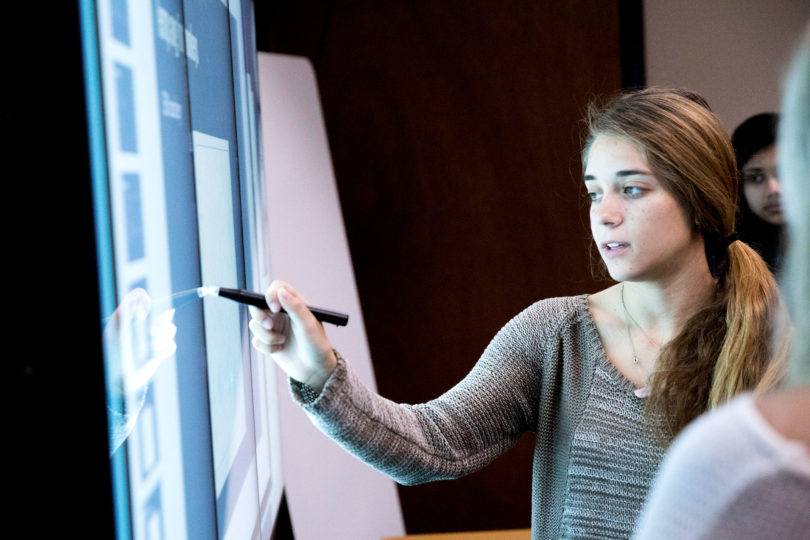For students in professor of genetics Jonathan Arnold’s systems biology bioinformatics class, a unique learning format has students from many different disciplines working together to complete research projects.
While researchers often have an opportunity to collaborate with other researchers from disciplines outside of their own, this is not always the case for students in the classroom. Arnold, alongside Juan Gutierrez and Art Edison, wanted to change the routine method of learning and set out to create an immersive learning environment using two unique technological learning tools.
When students arrive to class, they are given an assessment to see what they know—their strengths and weaknesses among different topics such as biology, mathematics, physics and the like. Based on that assessment, each student receives a personalized syllabus based on what they need to learn to go forward with their research projects. Known as ALICE, or Adaptive Learning in an Interdisciplinary Collaborative Environment, students complete a selection of learning modules in ALICE outside of class with the end goal of completing a capstone project in the form of a research project of their choosing.
“The idea of putting together and immersing students in a common project is a fairly old idea, but what’s different about this is that we structured this project with our new cyber learning tool called ALICE,” said Arnold. “Normally, you teach the same thing to every student in the class. What we created is a personalized path through this network of topics that’s different for every student.”
Once students take a personalized assessment, they are asked what types of research projects they are interested in, based on a list of possible projects, and ALICE creates their unique learning paths. All of the learning materials are available online in ALICE, and students mostly complete their learning modules outside of the classroom.
Created by Gutierrez, professor of mathematics, and his students as a part of a National Science Foundation grant, ALICE is 21 years in the making and originally began as a program called Literatronica as part of an adaptive learning grant.
When students are in class, they use a technological tool known as the iWall to collaborate on their research projects. Located on the third floor of a classroom in the science library, the iWall consists of three large monitors that form one giant touchscreen, much like a large form tablet. Students use the iWall and the platform in different ways—as a blackboard to make notes or calculations, as a means to teleconference with other researchers and to look at high-resolution data sets and analyze them.
The idea, with both ALICE and the iWall, is to learn more about how new technology can assist with learning.
“ALICE does not require the iWall, but it is certainly improved by it. Likewise, the iWall does not require ALICE,” said Gutierrez. “In the end, both projects ask the same question: How can we optimally use digital media?”





